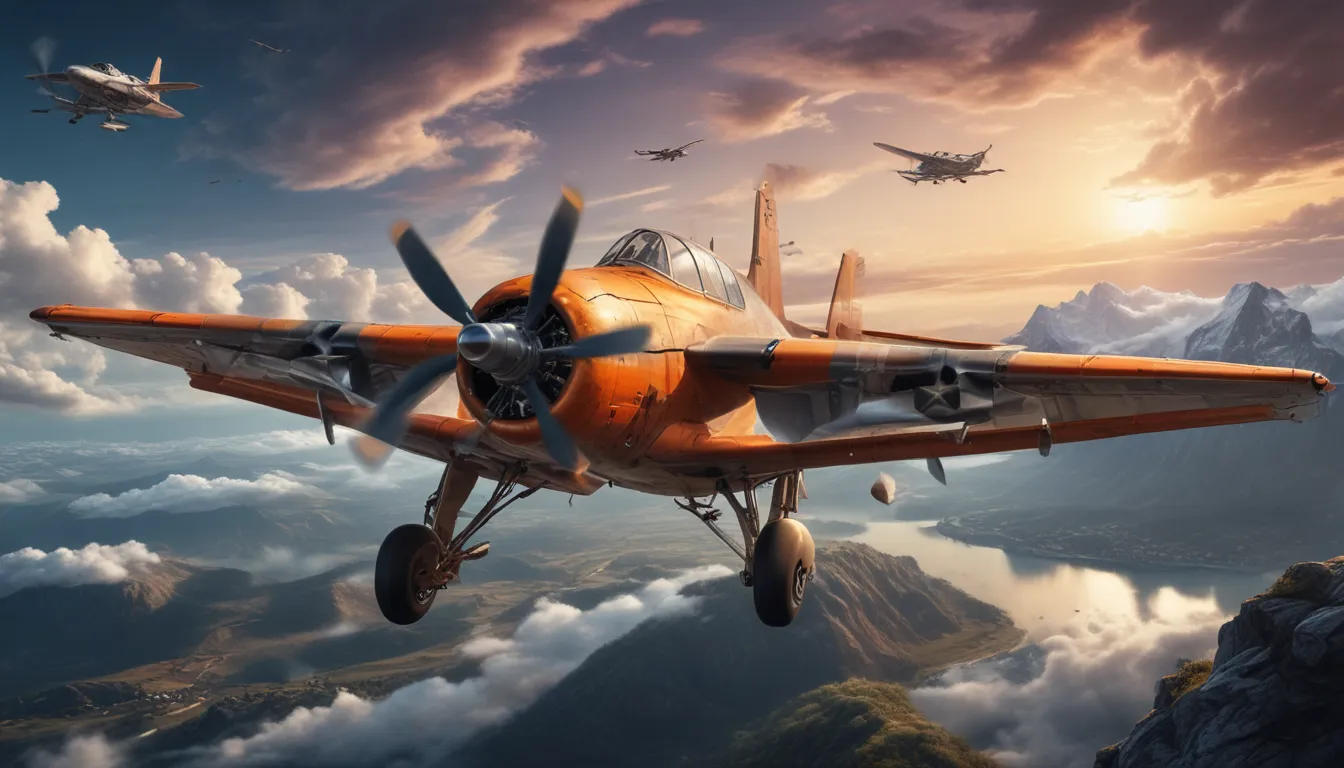A Note About Images: The images used in our articles are for illustration purposes only and may not exactly match the content. They are meant to engage readers, but the text should be relied upon for accurate information.
Are you ready to embark on a journey through the skies and uncover the most captivating facts about flying? Join us as we delve into the world of aviation, from the groundbreaking achievements of the Wright Brothers to the mysteries of the Bermuda Triangle. Let’s take off into an adventure filled with awe-inspiring revelations and intriguing tidbits that will enrich your knowledge and spark your curiosity. Buckle up and get ready to soar high above the clouds!
The Allure of Flight
Humans have always been mesmerized by the boundless sky and the endless possibilities it holds. Flying connects us in ways that transcend distances, offering a bird’s-eye view of our planet and a sense of wonder that knows no bounds. This fascination has driven remarkable advancements in aviation technology, making flying not just a mode of transportation but an exhilarating experience that opens up new horizons.
Historic Milestones
- The Wright Brothers’ Historic Flight: In 1903, Orville and Wilbur Wright achieved a monumental feat by conducting the first controlled, powered, and sustained flight in a heavier-than-air aircraft near Kitty Hawk, North Carolina. This groundbreaking event marked the dawn of a new era in human history.
The Safety of Air Travel
- Safety First: Contrary to common misconceptions, flying is considered one of the safest modes of transport. With odds of being in an airplane accident at about 1 in 11 million, you’re more likely to encounter danger on your way to the airport than during your flight.
Speeding Through the Skies
- Breaking Sound Barriers: The average cruising speed of a commercial airliner is an impressive 575 miles per hour, allowing passengers to reach their destinations in a fraction of the time compared to other modes of transportation.
The Longest Journey
- A Marathon in the Sky: Singapore Airlines operates the world’s longest commercial flight from Singapore to Newark, covering a staggering distance of 9,534 miles in approximately 18 hours and 45 minutes.
Eco-Friendly Skies
- Sustainable Solutions: Aviation contributes approximately 2% of global carbon emissions, prompting efforts to develop more fuel-efficient planes and eco-friendly aviation fuels to mitigate its environmental impact.
Thriving Airports
- A Hive of Activity: Hartsfield-Jackson Atlanta International Airport holds the title of the world’s busiest airport, accommodating over 110 million passengers annually and serving as a crucial hub for global travel.
The Science of Flight
- Defying Gravity: Airplanes utilize the Bernoulli principle and the shape of their wings to create lift, enabling them to soar through the skies with grace and efficiency.
Reaching New Heights
- Sky-High Travels: Commercial aircraft typically cruise at altitudes ranging from 33,000 to 42,000 feet in the stratosphere, providing passengers with smooth flights and minimal air resistance.
Pioneering Aviators
- Amelia Earhart’s Legacy: In 1932, aviation pioneer Amelia Earhart became the first woman to fly solo nonstop across the Atlantic Ocean, setting a groundbreaking milestone in the history of flight.
The Evolution of In-Flight Entertainment
- From Radio to Wi-Fi: The journey from the first in-flight movie in 1921 to today’s array of entertainment options, including Wi-Fi, movies, music, and games, reflects the continuous innovation in in-flight entertainment.
Sky Giants
- A380: The Airbus A380 stands as the world’s largest passenger aircraft, capable of accommodating up to 853 passengers in a single-class configuration, symbolizing the marvels of modern aviation engineering.
Ensuring Air Safety
- Air Traffic Control: Air traffic controllers play a vital role in maintaining the safety of flights, orchestrating the movement of countless aircraft in the sky and ensuring seamless takeoffs, landings, and in-flight navigation.
Overcoming Jet Lag
- Adjusting to Time Zones: Jet lag results from the mismatch between your body clock and the new time zone you’ve entered due to rapid air travel, with eastward flights typically causing more severe jet lag.
A Glimpse into the Future
- Innovations Ahead: The aviation industry continues to evolve with advancements in electric planes, supersonic travel, and even space tourism on the horizon, promising faster, more efficient, and accessible flying experiences.
In-Flight Medical Preparedness
- Handling Emergencies: Despite fears of in-flight medical emergencies, they are relatively rare, occurring only in about 1 in 604 flights and prompting airlines to equip themselves with medical kits and emergency protocols.
The Charm of Airline Dining
- Culinary Delights: Airline meals, introduced in 1919 by Handley Page Transport, have become integral to the flying experience, offering passengers a range of dining options from standard fare to gourmet dishes.
Debunking Mysteries
- Bermuda Triangle: The Bermuda Triangle’s reputation for causing the disappearance of aircraft and ships is often attributed to navigational errors and natural phenomena rather than mysterious forces, according to scientific consensus.
The Thrill of Takeoff
- High-Powered Beginnings: The takeoff phase of flight, marked by rapid acceleration and engine power, is a thrilling moment for many passengers as the plane lifts off into the skies.
Serenity above the Clouds
- Tranquil Escapes: Once a plane reaches its cruising altitude, passengers often find solace in the calm and peaceful environment, gazing out at the vast expanse of the sky and the world below.
The Importance of Black Boxes
- Unsung Heroes: Flight data recorders and cockpit voice recorders, commonly known as black boxes, play a crucial role in investigating aviation accidents and improving safety measures for future flights.
Window Seat Wonders
- Spectacular Views: Window seats offer passengers unparalleled vistas of breathtaking landscapes, sunrises, sunsets, and cloud formations, providing a front-row seat to the beauty of the world from above.
Ground Crew Excellence
- Behind the Scenes: Ground crews perform essential tasks such as baggage handling, aircraft maintenance, deicing, and refueling, ensuring that flights depart safely and on schedule.
Language of the Sky
- Clear Communication: Pilots and air traffic controllers rely on the International Civil Aviation Organization (ICAO) phonetic alphabet to facilitate precise and effective communication, enhancing flight safety and operational efficiency.
Reflecting on the Skies
As we conclude our exhilarating journey through the wonders of aviation, each fact uncovered has shed light on the marvels of flight and the intricate world of air travel. From historic achievements to future innovations, each detail showcases the ingenuity and exploration that define the essence of flying. Whether you’re a seasoned traveler or an aspiring adventurer, let these revelations enrich your understanding and appreciation of the boundless skies above. As you prepare for your next flight, remember the magic that propels you through the air and the endless possibilities that await you in the vast expanse of the sky.
We hope you enjoyed our collection of fascinating flying facts that have broadened your knowledge and fueled your curiosity. As we strive to deliver accurate and engaging content, your valuable contributions and insights enrich our platform and ensure a robust foundation of knowledge for all. Join us in celebrating the wonders of aviation and continue exploring the limitless possibilities that the world of flight has to offer. Thank you for soaring with us through the skies of discovery and wonder!






